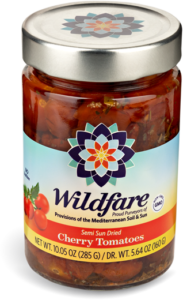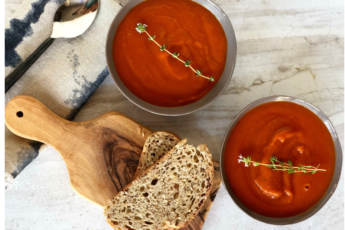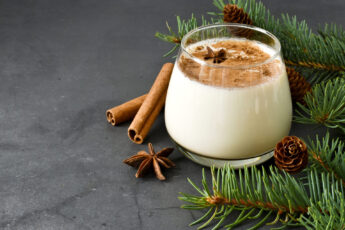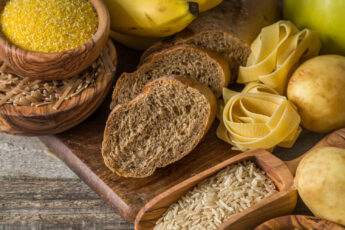Picture it: 60 aisles over 2 huge floors of a behemoth convention center, all focused on “specialty food.” It’s 3 days, with exhibitors giving out samples the whole time: Imported, domestic, in every food group, yet many foods you’d never heard of. #Overwhelming. Not kidding…
From experiencing previous shows, I’ve learned to keep an open mind, yet be selective and have a plan. I was on the lookout for foods that were new and unique, and of course, delicious.
Caveat: it’s the “Fancy Food Show,” not the “Economical Food Show.” This is B2B. Product samples are provided free by exhibitors. No other compensation was received.
Among the foods I found most interesting:
Arctic Krill
 Krill are crustaceans, like shrimp and lobster, and these come in a flat can, like sardines, but the krill from Krill Arctic Foods looked like chopped shrimp. Krill are small crustaceans, usually about 0.1 to 3.5 cm in length, mostly found in Antarctic waters.
Krill are crustaceans, like shrimp and lobster, and these come in a flat can, like sardines, but the krill from Krill Arctic Foods looked like chopped shrimp. Krill are small crustaceans, usually about 0.1 to 3.5 cm in length, mostly found in Antarctic waters.
Nutrition vitals about krill:
- Low in fat, with only 1 gram per 105-gram portion, although there’s omega-3 in the fat that is there. About 1/3 of that fat is omega-3s, per this analysis.
- PROTEIN! A respectable 15 grams in only 67 calories in 1 portion. The protein quality is among the best, ranking with the protein in eggs and dairy foods.
- Nutrients! Krill meat has calcium, magnesium and more B12 than salmon.
You may know about krill oil supplements, which have healthful omega-3s, but contain no krill protein, which is comparable to the protein quality in eggs and dairy.
How’s it taste? I liked this krill meat. Think shrimp but with a crab-like texture. A more intense fish umami yet wasn’t “fishy”. Alfred Nasti, Founder of Krill Arctic Foods, says the majority of tasters at the show felt similarly.
More Factoids about Krill Arctic Foods krill meat from Alfred:
- The krill meat is “cleaned, steamed and frozen onboard our factory vessel within 3 hours of harvest”, so it’s still in its original form.
- Sustainability: Krill fishing is limited by the US Conservation of Antarctic Marine Living Resources to 1% of the total krill biomass.
- The discarded krill shells aren’t wasted: they become food for salmon and shrimp – also for cosmetics and face creams, ahem.
- Krill have been harvested for human consumption by Ukrainians for over 30 years. Ukraine used to sell it to Russia, and we all know why that stopped.
Caviart® Black Seaweed Pearls

Photo: https://www.seasonproducts.com
On another sea-friendly note, the Season folks, known for their tins of sardines (one of my pantry staples) and other fish, were launching Caviart® Black Seaweed Pearls – a “twist on caviar, full of surprising flavor”. It’s composed of seaweed “pearls” that are a “caviar alternative”.
Factoids about seaweed from their website:
- “As one of the least invasive forms of aquaculture, these little gems require no infrastructure, fertilizers, and virtually no ecological footprint.
- Seaweed grows rapidly, making it a highly sustainable food source that also adds oxygen to the water.”
Fish caviar can be frightfully expensive, and these seaweed pearls are strikingly similar in appearance, and vegan-friendly.
The taste? These pearls had caviar’s seafood-like essence, but were more toothsome, and with less “pop” than fish caviar. I didn’t see that as a negative, just different. The ingredients include a spice blend, lending extra umami. Season offers several recipes using Caviart®, including for deviled eggs, and Caviart® baked potatoes.
Nutrition bonus: 2 tablespoons (24 grams) have 1 gram of fiber and NO calories!
Afghan saffron

Photo: Afghan Zafaran Consortium
This product tugged at my heartstrings a little. Many saffron farmers are Afghan women. The US Agency for International Development (USAID), with the Afghan Zafaran Consortium, has helped many upgrade their farms and processing equipment to transition from growing opium to growing saffron.
Factoid about Afghan saffron: Harvest is all by hand and very intense! The time window, from the moment saffron flowers are picked, through drying, sorting, and through to the finished packaged product, is 12 hours! Learn more about Afghan saffron’s farmers, quality, traceability, and safety here.
Tasting: I sampled the rice dish they’d prepared with their saffron. This saffron delivered the goods: at once sweet, savory, earthy, and unlike other saffron I’ve used. It’s hands-down the most expensive spice, but when I do buy saffron, I’ll look for Afghan saffron!
“Wanna Taste Something You’ve Never Had Before?”

Photo: Wildfare.com
Said to me as I walked by the Wildfare booth. My reply, “I doubt you can do that.”
They proved me wrong. This company imports all manner of Turkish delicacies. Every one of them I tried was delicious, seriously. Among my favorites:
- Semi-dried grape tomatoes: Being semi-dried (still under the sun) concentrates their wonderfully sweet, tomatoey goodness, avoiding the chewiness of overdried tomatoes. Perfect for bruschetta or with fresh burrata cheese – but I’d happily eat them by themselves.
- Pistachio butter: this is just pistachios and some sugar (only 7 grams in 2 tablespoons) for an olive-green paste. Bonus: no added sodium, and none needed. I love a good PB & J but when you want a nice upgrade, this pistachio butter fits the bill – and no “J” is even needed!
- Fig preserves with chia seeds: PB & J aside, I love fig preserves and jams. I love them on my buttered sourdough toast and it goes well with many cheeses (St. Andre if you’re going high-end, but it serves a good Monterey jack just as well).
What I liked about Wildfare’s fig preserves: It’s mostly figs! A 14-gm tablespoon has only 5 gms added sugar, from date juice concentrate. Most preserves are at least half added sugar. It’s thickened with chia seeds instead of pectin. This how fig preserves SHOULD taste, IMHO — figgy!
Next post: “Upcycled foods” gained serious traction at the Fancy Food Show! Foods you’ve never heard of made from foods you HAVE heard of!
Featured photo, courtesy of Season.






